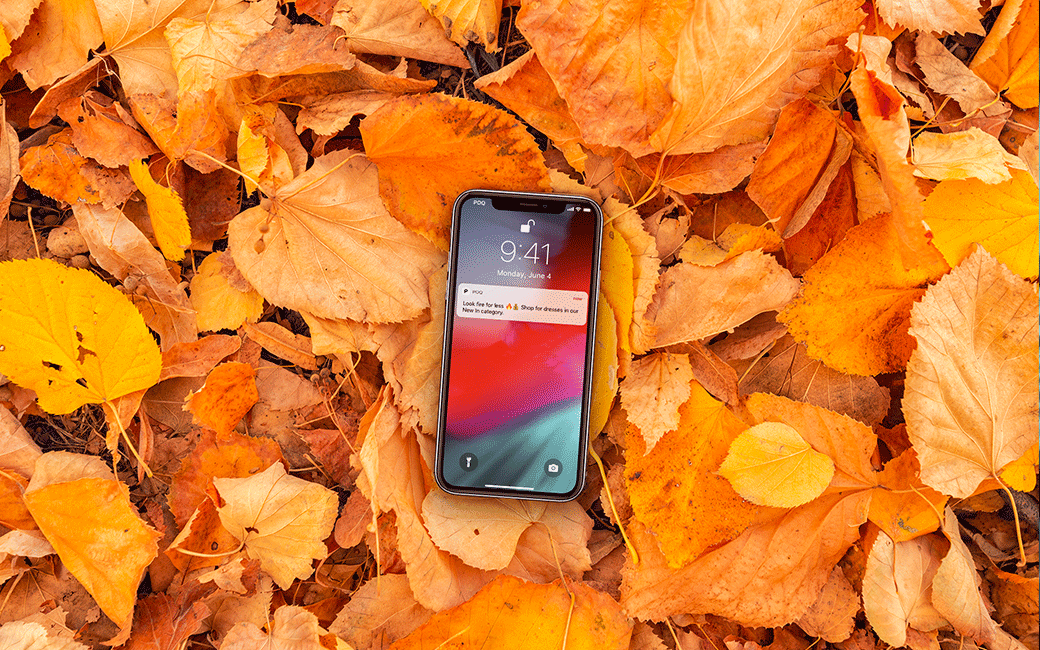This month in the world of app commerce – October 2019

It’s official. The ramp-up for Black Friday has begun. This month we kick off with the latest predictions for Black Friday and the Holiday Sales Season. We also discuss the preference for mobile in-store and take a look at those who are winning the omnichannel game.
When exactly do the holiday sales begin?
This year sees the gap between Thanksgiving and Christmas shorten by 6 days compared to 2018. This means there are 6 days fewer between Black Friday (when many people do gift shopping) and Christmas. Deloitte predicts that shopping on Cyber Monday will pick up, pushing the bulk of holiday shopping into December. However, as many as 45% of respondents in Profitero’s survey plan to shop before November, and 25% even said they started in September.
RetailMeNot have gone even further to say that shoppers have started holiday shopping back in July. As 28% of shoppers admit to making their first purchase sooner than last year and 34% are looking for earlier deals this season.
Retailers are picking up on this too. Walmart launched the start of it’s Holiday sales online on October 25th and will be launching in stores from November 1st.
With the retail apocalypse looming, what’s the forecast for Black Friday?
Twenty-eight per cent of people have already planned to buy gifts during Black Friday, Cyber Monday or during Cyber Week. In fact, most of the forecasts for Black Friday are fairly positive but vary by a degree. Here’s what the industry is saying:
- NRF: predicts total holiday sales (for November and December) to grow between 3.8% and 4.2%, meanwhile online sales should grow 11% – 14% from 2018.
- Salesforce: predicts that 70% of online traffic will be from mobile and at least half of orders placed will be from mobile.
- RetailMeNot: predicts 45% of Black Friday Shoppers will do the majority of their shopping online, up from 31% last year.
- PwC: Found that sales tipped in favour of online compared to 2018. 54% of respondents said they planned to shop online vs 46% in-store, this is up 42% of those who shopped online last holiday season.
- daVinci Payments: 43% of survey respondents claimed they planned to spend the same as they did last year this holiday season. With 45% of the survey respondents planning to make more than half of their purchases from their smartphones.
So, it looks like the industry predicts the shortened shopping season won’t have an impact on holiday sales as these predictions show continued growth. US shoppers can also breathe a sigh of relief as Trump’s 10% tariff increase on Chinese imports has been delayed from Oct 15th to Dec 15th, avoiding Black Friday and Cyber Monday.
Is your app ready for the holidays?
Preference for mobile
Smartphones have changed the way we shop, not only online but in-store too. Fifty per cent of all UK in-store purchases made with a card are now contactless. Showing the convenience and security of using a phone is more attractive to consumers than using their plastic cards. In fact, this month also saw Apple Pay overtake Starbucks as the most used mobile payment app.
In fact, US consumers’ planned mobile usage for shopping has grown 8% from last year to 56%. Meanwhile, only 28% plan to use a desktop/laptop for shopping whilst, the remaining 16% plan to use a tablet.
With consumer preferences to shop on mobile, and especially on app, it’s no surprise that when retargeting app shoppers through ads they convert at a higher rate. New research by Marketing Mertic Solutions found that the probability of selling to a new app customer is 5%-20% compared to a 70% likelihood of selling to an existing app customer.
Not only does it cost up to 6x more to acquire a new customer than target an existing one, but app shoppers tend to spend 2.8x more per shopper than on mobile web. It was even found that holiday-specific ad content generated a 30% higher conversion rate than ads without holiday-based creative. We’ve also seen the greater success of push notifications with holiday-based content sent in Q4.
Find out more from the Retailer’s Guide to Consumer Behaviour During the Peak Trading Season.
Omnichannel
We love to see retailers winning with their omnichannel strategies and successfully closing the gap between the store and online. This month saw Adidas embracing experiential retail by taking to social. Adidas is the first retailer to sponsor a Snapchat game. “Baseball’s Next Level” that enables users to buy products directly.
Adidas hasn’t stopped it’s digital experiences either. This month saw the launch of Adidas’ most digital store ever on Oxford Street. Empowering those using the Adidas app to use the “Bring It To Me” feature, whereby staff can bring requested items to a customer anywhere in the store using geolocation data. App users can also check stock levels and even purchase an item on the spot.
It’s great to see how Adidas is leading the way in omnichannel retail and utilising their app to complete the shopping cycle and create a seamless journey. We hope to see a lot of retailers follow in Adidas’ steps.


